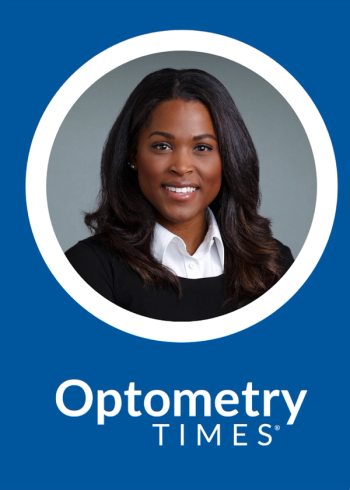
- June digital edition 2022
- Volume 14
- Issue 6
4 ways to maximize success with multifocal contact lenses
Help presbyopia patients by following fitting guides and embracing new adjunct therapy options.
By 2030, 1 in 5 Americans will be 65 years or older.1 As the US population continues to age, the demand for
Many patients are searching for options outside of glasses to correct their intermediate and near vision.
They want choices that fit seamlessly into their daily routines and do not highlight the fact that their eyes are aging.
Many patients do not know multifocal
Multifocal contacts lenses are a great solution for presbyopia and are certainly not a new modality. Yet some eye care providers still struggle with utilizing multifocal contact lenses in their practices.
Related:
Getting comfortable with this treatment not only ensures that patients have access to the latest technology in eye care, but it also maximizes practice success from a business standpoint.
Here are 4 tips to maximize the multifocal contact lens potential in your practice:
1: Plant the multifocal seed.
Some patients believe that progressive lenses, bifocals, or OTC reading glasses are their only options for correcting near vision impairment from presbyopia.
Other patients have been told in the past that multifocal contact lenses were not an option for them because of their prescription values or astigmatism presence.
But the world of multifocal contact lenses has evolved and there are many options for patients of all prescriptions.
A recent study showed that 31 million individuals buy OTC reading glasses every year, often from a supermarket or drugstore.3
As primary eye care providers, optometrists (ODs) have the opportunity to educate patients on all options available for them to see better and improve quality of life.
Start by telling patients that multifocal contact lenses can be the primary mode of vision correction or an option for part-time, hobby, or weekend wear. Explain how the contacts are designed, how they work, and how they can be integrated into daily life.
Even if a patient declines multifocal
Related:
Eye care staff members often have unique interactions with patients outside of the exam room, which may offer opportunities for them to educate patients about multifocal contact lenses.
2: Follow the fitting guide.
It is important to follow the fitting guide that accompanies each contact lens. This is especially true for multifocal contact lenses because different brands have different optical zones and fitting strategies.
Companies often revise their fitting guides as more data about the contact lenses become available through patient use. Many clinicians create their own fitting techniques.
This may work a small percentage of time but often it ends in more chair time and patients having subpar success with their multifocal contact lenses. It is a good idea to periodically revisit the fitting guides of contact lenses you fit frequently.
I learned this lesson the hard way when I first began fitting with Alcon’s Dailies Total 1 multifocal lenses many years ago. I followed a fitting approach similar to other multifocal contact lenses on the market that correlated a low/medium/high multifocal lens with a patient’s addition (ADD) power.
My fitting strategy did not follow the fitting guide and resulted in more chair time, multiple contact lens follow-ups, and patients with mediocre vision in their
It all changed when I went back to the fitting guide and followed it. For this particular contact lens, adding +0.25 to the spherical correction and going with the lowest ADD possible made it fit best. These simple shifts led to better outcomes with the first trial contact lens and translated to less chair time and happier patients.
3: Set the expectation.
Take time to set up realistic yet positive expectations. Instead of chasing perfect 20/20 for distance and near vision, a more appropriate end point should be functional vision for both distance and near.
Every patient has different visual demands and functional vision is going to vary tremendously for each patient. It is important to educate patients that success is them being able to go through most of their daily activities with the contact lens.
Related:
I also tell patients not to compare their vision in multifocal contact lenses with their vision in glasses, as it is comparing apples with oranges. Setting these clear expectations lets patients know it is OK not to reach a perfect 20/20.
That said, many patients do obtain 20/20 at both distance and near with modern day multifocal contact lenses.
In 2021, McDonald et al proposed a categorization of
In their system, the mild
Taking this approach to presbyopia classification is more fitting and explains why sometimes a 53-year-old patient’s presbyopia may be classified as mild whereas a 38-year-old patient’s presbyopia may be classified as moderate.
This categorization approach to presbyopia has helped me select the best candidates for multifocal contact lenses and set realistic expectations for patients.
4: Embrace new adjunct therapy options.
Multifocal contact lenses will not be a perfect modality for every patient, even after setting appropriate expectations and following fitting guides.
One troubleshooting technique I have found success with is using Vuity (Allergan, 1.25% pilocarpine) with a multifocal contact lens in patients who are not able to achieve the clarity they need at intermediate or near. Vuity is an FDA-approved, first-in-class medication for the management of presbyopia in adults.
Related:
An optimized concentration of 1.25% pilocarpine combined with a proprietary pHast technology makes Vuity different and more effective clinically for presbyopia in comparison with pilocarpine.
Vuity, a cholinergic muscarinic agonist, has a dual mechanism of action. It activates the iris sphincter and ciliary smooth muscles to cause an extended depth of focus and increase amplitude of accommodation. By making the pupil smaller, similar to pinhole optics, the near vision improves.
Vuity went through 2 parallel phase 3 clinical trials (Gemini 1 [NCT03804268] and Gemini 2 [NCT03857542]) and included participants aged 40 to 55 years who had a distance corrected visual acuity of 20/40 to 20/100.
The clinical trials found that at least 3 lines of improvement at near in mesopic (low light) conditions was observed without compromising more than 1 line (5 letters) of distance vision.
In photopic conditions, 9 out of 10 trial participants saw an improvement in near vision better than 20/40 in photopic conditions. In bright light, one-third of participants were able to achieve 20/20.
The clinical trials also showed improvement in intermediate vision. The most common adverse events of Vuity were conjunctival hyperemia (5%) and headaches (15%).
In my experience, patients who have experienced headaches reported them as mild, transient, and only occurring on the first day of using Vuity.
Vuity is taken once a day and becomes effective within 15 minutes after instillation. Most patients report that it lasts for 6 to 10 hours.
If using Vuity with contact lenses, the drop should be instilled in the eyes without a contact lens. After 10 minutes, contact lenses can then be inserted into a patient's eye. Vuity is a prescription eye drop that can be sent to any pharmacy.
Although Vuity has not been studied in combination with multifocal contact lenses, I have found that, in some cases, this combined adjunct approach allows multifocal contact lens patients to achieve the improvement in near vision they are seeking.
References
1. Rural Health Information Hub. Demographic changes and aging population. Accessed 4/22/2022. https://www.ruralhealthinfo.org/toolkits/aging/1/demographics#:~:text=The%20U.S.%20population%20is%20aging,grow%20to%20almost%2090%20million
2. Chang DH. Presbyopia: rethinking approach to better meet patients’ needs. Ophthalmology Times®. July 21, 2020. Accessed March 1, 2022. https://www.ophthalmologytimes.com/view/presbyopia-rethinking-approach-to-better-meet-patients-needs
3. VisionWatch. The Vision Council. September 2016. Accessed March 1, 2022. https://www.thevisioncouncil.org/sites/default/files/research/VisionWatch_VisionCouncil_Member_Benefit_Report_September%202016_FINAL.pdf
4. McDonald MB, Barnett M, Gaddie IB, et al. Classification of presbyopia by severity. Ophthalmol Ther. 2022;11(1):1-11. doi:10.1007/s40123-021-00410-w
Articles in this issue
over 3 years ago
Happy accidents vs planning for success: part 1over 3 years ago
Peripupillary prognosticators of glaucomaover 3 years ago
Therapy options based on DED severityover 3 years ago
Identifying patients with keratoconusover 3 years ago
Digital health care in optometryover 3 years ago
Advances in the management of dry AMDNewsletter
Want more insights like this? Subscribe to Optometry Times and get clinical pearls and practice tips delivered straight to your inbox.













































.png)


